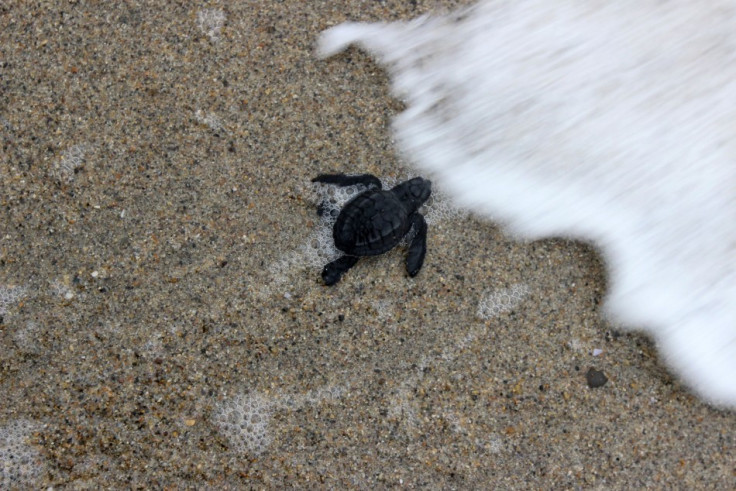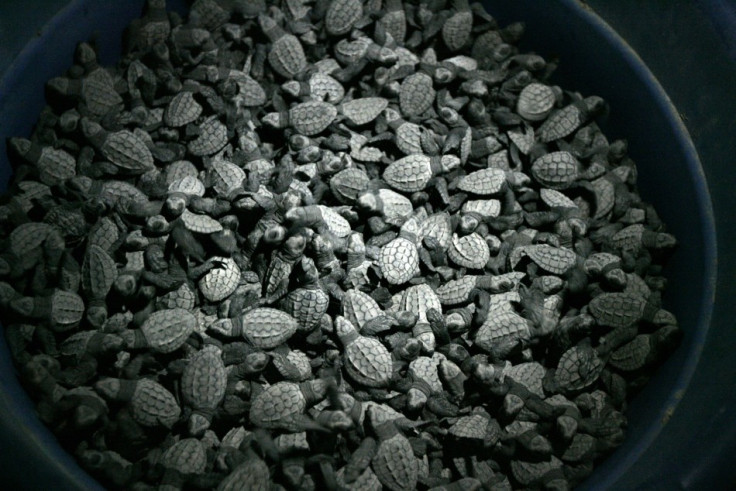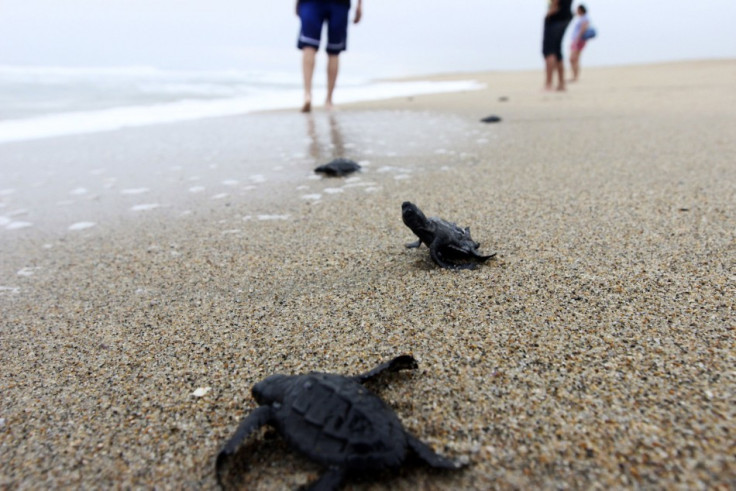Baby Sea Turtles Released into Pacific Ocean in Mexico [PHOTOS]

Hundreds of Olive Ridley turtle hatchlings (Lepidochelys olivacea) have been released into the Pacific Ocean at Tomatlan, Mexico as part of the annual programme to boost sea turtle numbers.
The ecological programme was implemented by Mexico's government over 23 years ago in an effort to protect this endangered species that has been hunted for their shells and meat.
According Mazatlan Aquarium, which runs sea turtle conservation programme, seven of the eight species of marine turtles in the world come to lay eggs on the beaches of Mexico.
Olive Ridley's gregarious nesting
According to NOAA Fisheries, the Olive Ridley has one of the most extraordinary nesting habits in the natural world with an estimated 800,000 turtles nesting together.
The Olive Ridley, with its distinctive olive coloured heart-shaped top shell, is the most abundant sea turtle in the world.
"Large groups of turtles gather off shore of nesting beaches. Then, all at once, vast numbers of turtles come ashore and nest in what is known as an "arribada" (meaning arrival by sea in Spanish)," NOAA explains.
"During these arribadas, hundreds to thousands of females come ashore to lay their eggs. At many nesting beaches, the nesting density is so high that previously laid egg clutches are dug up by other females excavating the nest to lay their own eggs."
The hatching season of November and December are still underway and officials expect that more turtles will be born this year.
Scroll down to view the pictures of the release of Olive Ridley sea turtle hatchlings in Mexico.



© Copyright IBTimes 2025. All rights reserved.






















